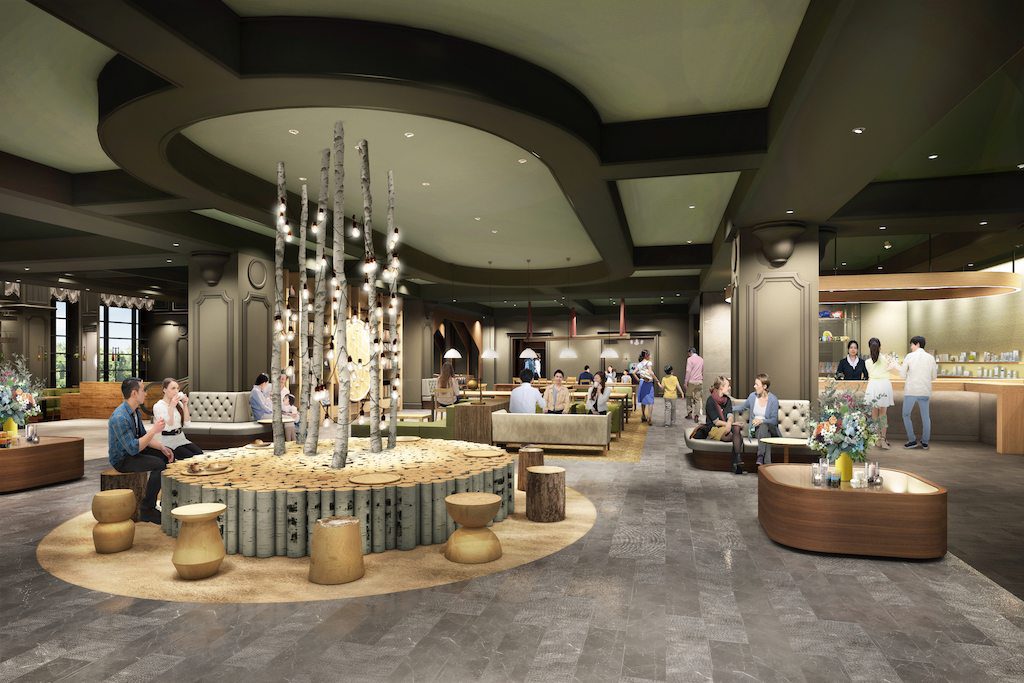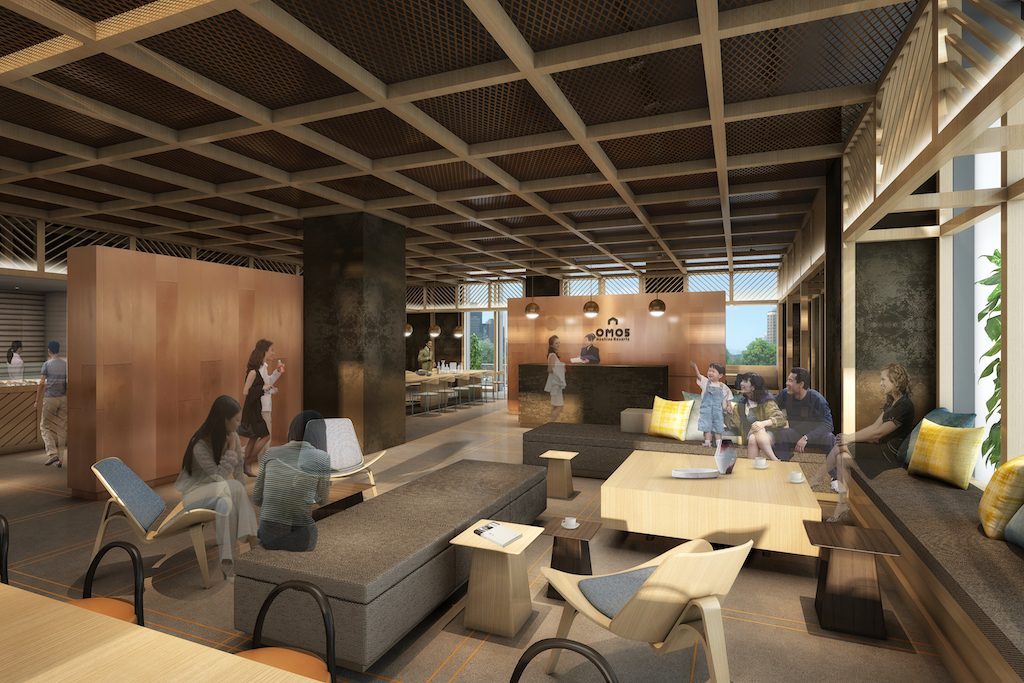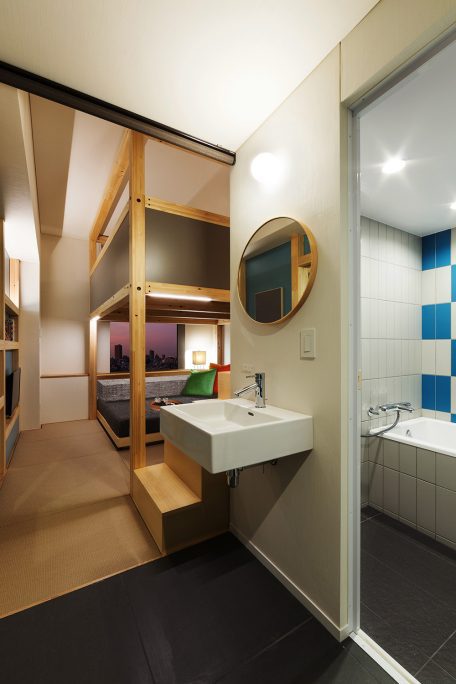Skift Take
Hoshino Resorts is smart to get a head start on accommodating the influx of travelers who are not only traveling to Japan in droves, but yearning to do so in a way that makes them feel more connected to the local culture, without having to break the bank.
Hoshino Resorts, a family-owned hotel company based in Japan that’s been in operation for more than 100 years, just announced its newest brand: OMO. The new midscale brand was designed to appeal to tourists, and to capitalize on the visitor boom that Japan has experienced in recent years, as well as the crowds expected for the upcoming 2020 Olympic Games.
In 2016, more than 24 million tourists visited Japan, a record number for the fourth straight year, according to the Japan National Tourism Organization, and by 2020, the government hopes to welcome 40 million tourists.
The first OMO hotel, a conversion, is scheduled to open in Hokkaido in April, with another one, a newbuild, to follow in May in Tokyo. A third hotel, also a newbuild, is set to open later this year in Osaka.
Hoshino, which is perhaps best-known for its ultra-luxury Hoshinoya brand, is embarking on plans for global growth that take the company beyond Japan. Already, it also owns two properties based in Bali and Tahiti, and CEO Yoshiharu Hoshino has said he wants to use his hotels as platforms for introducing the world to Japanese hospitality.
With its new OMO brand, Hoshino is doing things a bit differently. The company’s CEO told Skift, “Until now, we have provided guests with excitement and cultural experiences within our resorts or Japanese ryokans and inns. However, our OMO locations are directly surrounded by local communities, while being in a convenient location for travelers to explore. We want our guests to discover the out-of-the-ordinary experience that lies within each city.”
He added, “OMO is the brand that maximizes the charm, personality, and diversity of regional cities and metropolitan areas” and said there’s a possibility, in the long term, to expand the brand outside of Japan.
For now, however, the plan is to grow OMO domestically and to promote it directly via Hoshino’s website as well as online travel agencies.
In other words, it’s a new midscale brand focused on what so many other new hotel brands have emphasized as their guiding principle, regardless of chain scale category: introducing travelers to local experiences.
“My thought was that I wanted to create a city hotel that would allow guests to see the place they are staying in through the point of view of a traveler who is interested in learning about the destination,” Hoshino said. “We began to wonder how a city hotel might change if we created one, only by thinking of curious explorers staying as guests. Our concept became ‘get down with the local rhythm,’ communicating to guests the unique local rhythm and culture they may experience staying at any OMO hotel. We hope that this concept will make a difference in allowing for a wider discovery of individual Japanese cities all over the country and the uniqueness of each location from food culture to history and customs.”
A Closer Look at OMO
Makarand Mody, assistant professor of hospitality marketing at the Boston University School of Hospitality Administration, said OMO is similar to other brands, but that’s not necessarily a bad thing.
“While it’s a departure from what brands Hoshino has offered thus far, from a global trends perspective, the urban lifestyle hotel concept is something that hotel companies, large and small, are demonstrating a keen interest in, such as, for example Canopy by Hilton, Eaton Workshop, or even Jumeirah’s new proposed lifestyle brand,” Mody said. In that sense, Hoshino’s investment in OMO is perfectly aligned with broader international traveler trends towards locally immersive, design-forward, value-driven experiences. With Tokyo hosting the Olympic Games in 2020, and Japan seeing a tourism boom and an accommodation crunch especially in the urban centers, Hoshino will be keen to have as many hotels up and running in the next two years to capitalize on the market’s potential.”
One particularly interesting feature of the new OMO brand is that Hoshino plans to categorize each property using a numeral system from zero to nine. Zero signals “a completely no-frills experience” and nine represents “the complete OMO experience.”
For example, the Asahikawa property in Hokkaido will get an OMO7 rating, and Tokyo Otsuka is designated OMO5. But what elevates the Asahikawa property over the Otsuka is unclear at this point.
Mody wonders if the number system will cause confusion.
“… I wonder if this will also create confusion amongst customers and muddle customer expectations,” he said. “Telling a customer that a certain service is not available as part of a particular hotel’s experience because a hotel is a grade seven and not an eight seems problematic at the very start. Moreover, how does one go about explaining to the customer the contrast between a grade zero and grade nine, for example? This grading system does not communicate a consistent brand promise, in fact, it detracts from it. This is something Hoshino should perhaps rethink at this early stage of the brand’s launch.”
Other special features of the new OMO brand include a living-room-like lounge and tourist-friendly guest rooms.
The three-person Yagura Room uses vertical spaces and wall surfaces to make guests feel “like you’re in a secret hideout,” Hoshino said, while a two-person Danran Room is compact and designed to make it easy for guests to plan their sightseeing activities.
To further encourage guests to explore their local surroundings, the hotels won’t have full-service, all-day dining restaurants, but will serve breakfast and offer grab-and-go items.
Hoshino said OMO will offer guests “real-time local information.” While the company didn’t elaborate on exactly how it would provide this information to guests, Leora Lanz, a member of Boston University School of Hospitality’s marketing department, said she wondered how it would work.
“If the hotels use this as their unique selling proposition, I wonder what innovative ways they can share this with guests,” Lanz said. “Will it be through augmented reality, via text messages, upon arrival? This can be the unique aspect they can offer.”
Why Launch a New Midscale Brand?
The midscale hotel category has seen a tremendous amount of interest, especially in the U.S., within the last few years with the debut of such brands as Vib by Best Western, Moxy by Marriott, Tru by Hilton, Avid Hotels from InterContinental Hotels Group (IHG), and even Trump Hotels’ new American Idea brand, to name a few.
The reason for growth in this category, says Chekitan S. Dev, a professor at Cornell University’s SC Johnson College of Business and School of Hotel Administration, is because there is global demand for this type of hotel product.
Dev said that in most urban locations worldwide, you find a concentration of very inexpensive hotels and very expensive hotels, without many hotels in the middle of the price scale. But hotel demand among consumers is for prices in the middle, and that’s why so many hotel companies today are trying to fill that supply and demand gap with midscale hotels.
“Companies realize there’s this sweet spot in the market that’s in the middle tier,” Dev said. “It’s not surprising to me to learn that someone is creating a brand at the middle end. Companies that have had success mostly at the upper end think, ‘Why not make a brand extension to the middle end? We know this business.”
Dev said a classic case study in this approach is what Marriott did with its Courtyard by Marriott brand. “Every company worth its salt, with a few exceptions, is talking about this sweet spot in the middle where demand is growing and supply is still short of demand. More and more people globally are traveling where there aren’t as many good middle-tier choices.”
And in Japan, demand for more hotels and more accommodations to meet the record number of international tourist arrivals is making it an imperative for companies to open more hotels — if they can afford to do so.
For OMO, Hoshino saw room for a new brand that wasn’t like your typical business hotel.
“There is a variety of cities all over Japan, and just like all of the famous Japanese tourist attractions, each place has its own unique features, traditions and culture,” Hoshino said. “However, it is difficult for travelers to have the chance to fully immerse themselves into the culture of these local communities because there are not enough accommodations that can assist them by providing or sharing knowledge and understanding about where there are staying, from what to see, what to eat, what to experience, and so on. Due to the high cost of many hotels today, most travelers wind up staying in business hotels, suited solely for the purpose of providing travelers with merely a place to sleep.”
Lanz isn’t convinced OMO is all that different from the midscale brands already in existence in the U.S. and elsewhere. “Aside from the real-time local information, the brand truthfully doesn’t sound distinct enough yet to be a standout among the global players. Perhaps it could be in Japan, but not compared to what we have here in the United States, or at least not yet anyway based on what we know so far.”
Can This Brand Compete with Airbnb?
Japan’s need for more accommodations is also impacting the growth of short-term home rental platforms such as Airbnb. In 2016, Airbnb accommodated 3.7 million tourists, or approximately 15 percent of all international tourist arrivals in Japan.
In June 2017, the country passed a law that legalized homesharing. While some hospitality industry executives petitioned against the law’s passage, Hoshino was one of the few who supported it.
In May, he told Skift, “Many hotel operators are against the idea because they feel that short-term rentals will take their demand away from there. But my position is that short-term rentals are offering a totally different experience, and it is very important for the large cities in Japan or other destinations in Japan to offer variety in the stay experience.”
With Hoshino’s new OMO brand, however, it appears that the company has created a brand that competes directly with Airbnb.
Dev said that as Airbnb has matured, its listings have moved from being more on the economy side to more of the middle tier and, in that way, it too has become a competitor to hotels operating in the midscale space. “The fact that they also mention this as being something for the ‘pleasure traveler’ made me think of it as a competitor to Airbnb,” he said.
Hopefully Not Just Another Brand for Brand’s Sake
Mody thinks OMO, despite the potential confusion caused by its numeric labeling, could very well succeed.
“The brand features, as currently described, are consistent with what we are seeing in the United States in terms of urban lifestyle hotels. Nothing groundbreaking there,” he said. “However, Hoshino already possesses an expertise in offering locally immersive experiences through its Hoshinoya, Kai, and Risonare brands, albeit at a luxury level and from a holistic and wellness standpoint. I feel that the company would be able to readily leverage this expertise in offering an experience of localness in an urban lifestyle setting, and this sets OMO up for success.”
When Skift spoke to Hoshino last year, he seemed to acknowledge how hotel brand proliferation can be confusing for consumers. He stressed the danger of having too many brands and the importance of ensuring that if a new brand is launched, that it speak to a specific market segment. With OMO, it appears Hoshino is focused on value-driven tourists seeking assistance in having more local experiences when they visit Japan’s major cities.
“The hope with creating the OMO hotel brand is that it will make a difference in allowing for wider discovery of individual Japanese cities all over the country, and helping [travelers] to understand Japanese culture, customs, food, nature, and much more that the country has to offer,” Hoshino said.
Have a confidential tip for Skift? Get in touch
Tags: branding, hoshino resorts, midscale
Photo credit: A rendering of the lobby for the OMO7 Asahikawa in Hokkaido, which is expected to open in spring 2018. Hoshino Resorts


